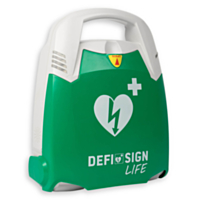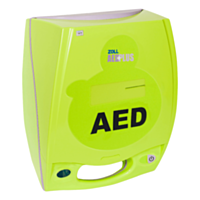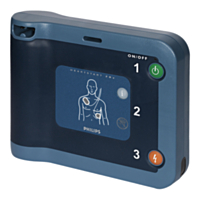What requirements must a community defibrillator meet?

More and more neighbourhoods are jointly purchasing a defibrillator for their community, this is of course a positive development that we certainly encourage! However, when buying a community defibrillator, it is important to take a few requirements into account, so that you can be sure to buy a suitable device. Every defibrillator saves lives, but purchasing a device with suitable specifications for the situation can save you precious minutes during an emergency.
When buying a community defibrillator, keep the following points in mind:
1. Weatherproof model
A community defibrillator is often placed outside in a wall-mounted cabinet. It is therefore crucial that the defibrillator can withstand various weather conditions. Note the IP rating (e.g. IP55 or higher), which indicates that the device is protected against dust and water.
2. User-friendly
The defibrillator should be easy to operate, even by people without a medical background. Clear spoken and visual instructions are a must, fortunately, every defibrillator nowadays has these functions. If you have considered buying a fully automatic defibrillator, these models even deliver a shock fully automatically when they detect that it is necessary. Inexperienced users are often hesitant to press the shock button of a semi-automatic defibrillator, and this of course takes time during a resuscitation. On the other hand, some communities prefer semi-automatic defibrillators, these give the paramedics the option to over-ride the shock if they deem it necessary.
3. Children's CPR options
In neighbourhoods where children live or play, it is useful that the defibrillator is suitable for child CPR. Some defibrillators have a special child button, such as the Mindray defibrillator. With other defibrillators, you need to buy a separate set of paediatric electrodes or a special key.
4. Maintenance costs
The electrodes and batteries of the defibrillator should have a long lifespan to minimise costs and maintenance, because as a community you may often have less financial resources. Therefore choose a model with electrodes that last 2-3 years, for example and a battery that lasts at least 4 years. Do not forget to buy a maintenance contract to ensure that your defibrillator is up-to-date with the latest software and is always provided with new electrodes or battery in time.
5. Clear visibility and availability
A community defibrillator should be easily accessible. Place it in a well lit, central location with a recognisable defibrillator sign. A heated outdoor cabinet ensures that the defibrillator remains effective even in cold periods.
A community defibrillator should be robust, user-friendly and highly visible. By choosing a model that meets the above requirements, you will ensure that your neighbourhood is ready to save lives when needed.
On our ‘Defibrillator s for the community’ page, you will find a complete overview of defibrillators that have the right specifications to serve as community defibrillators. If you need advice on which defibrillator is suitable for your neighbourhood, then get in touch with us!


